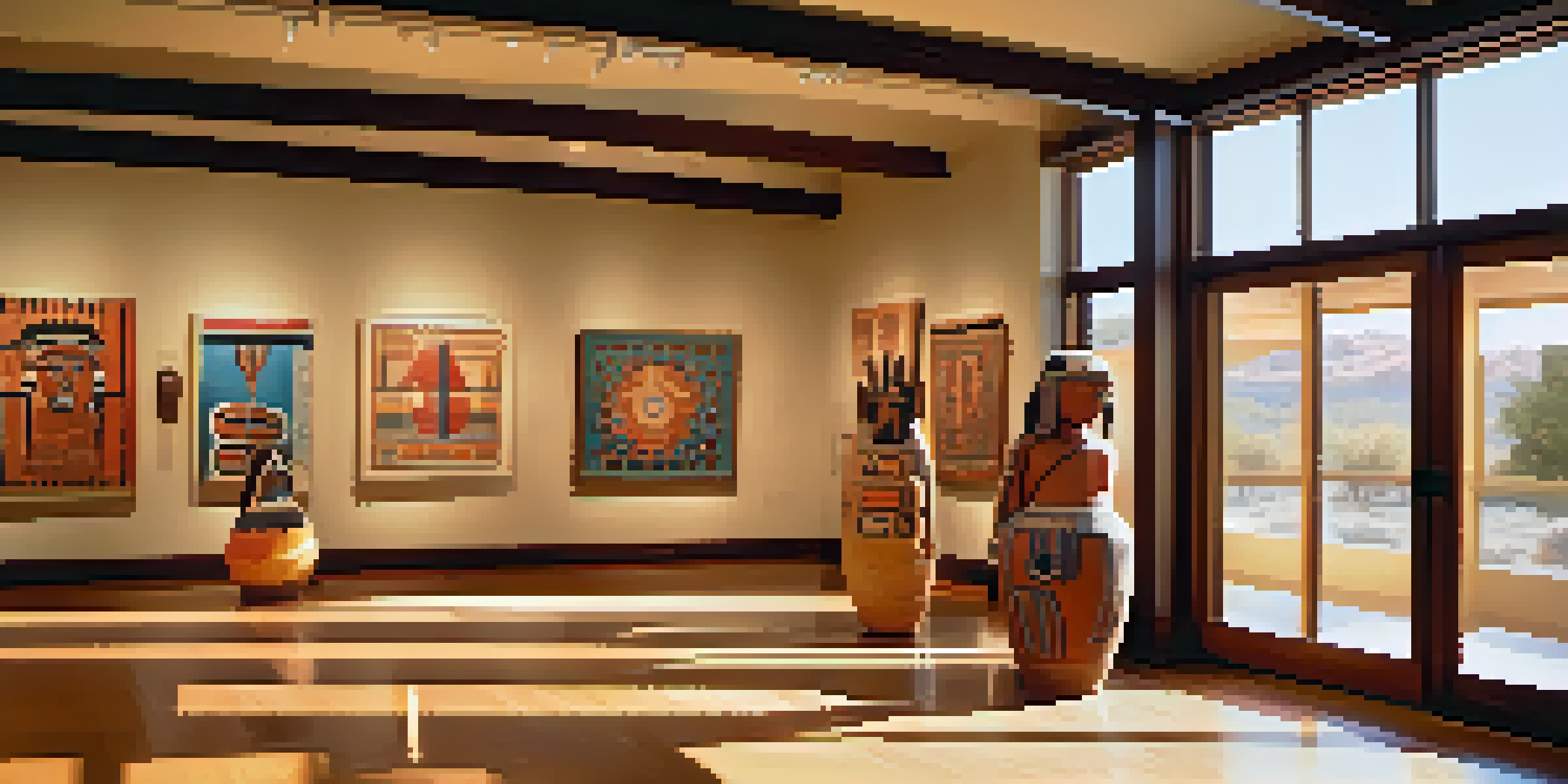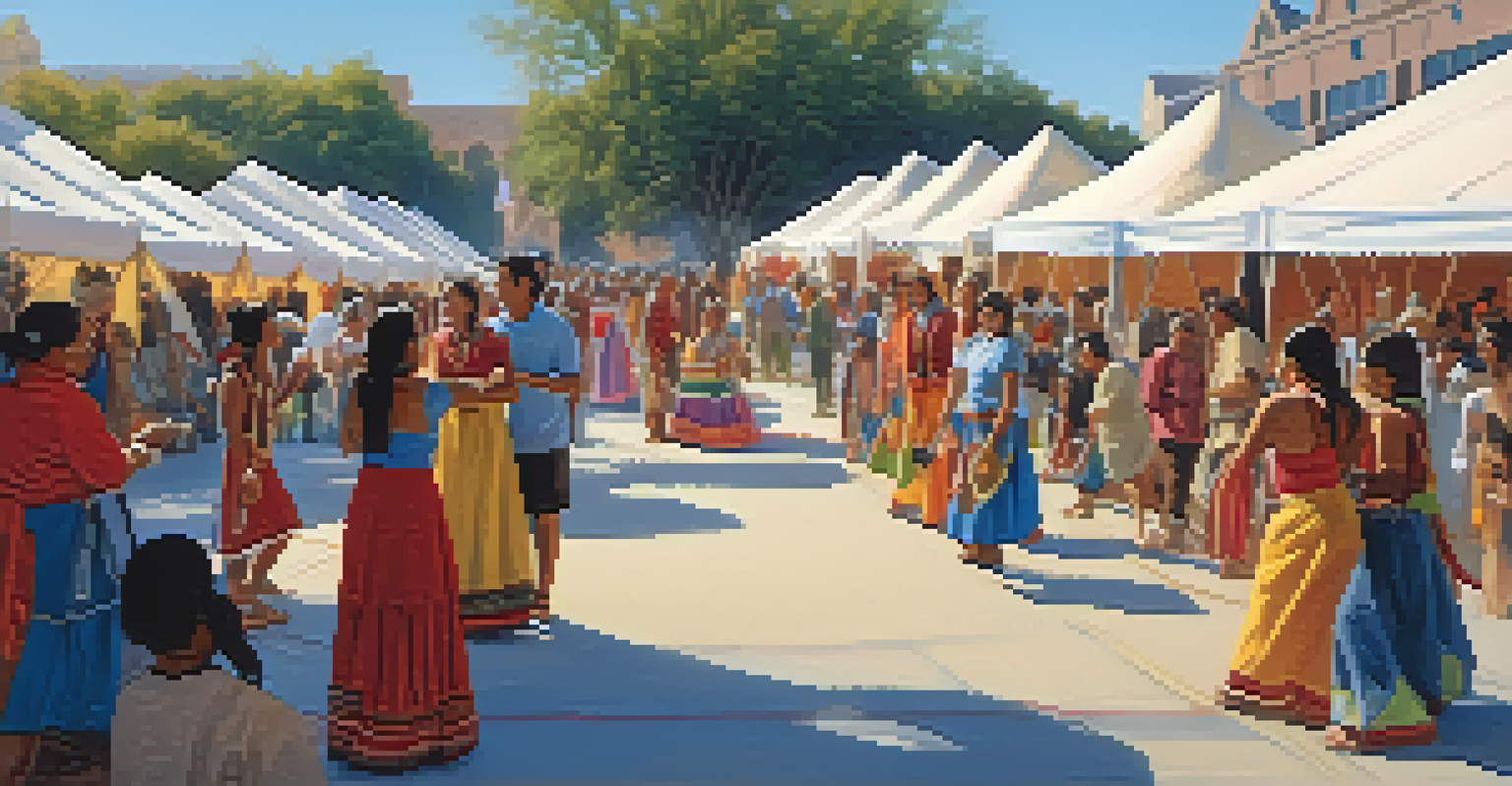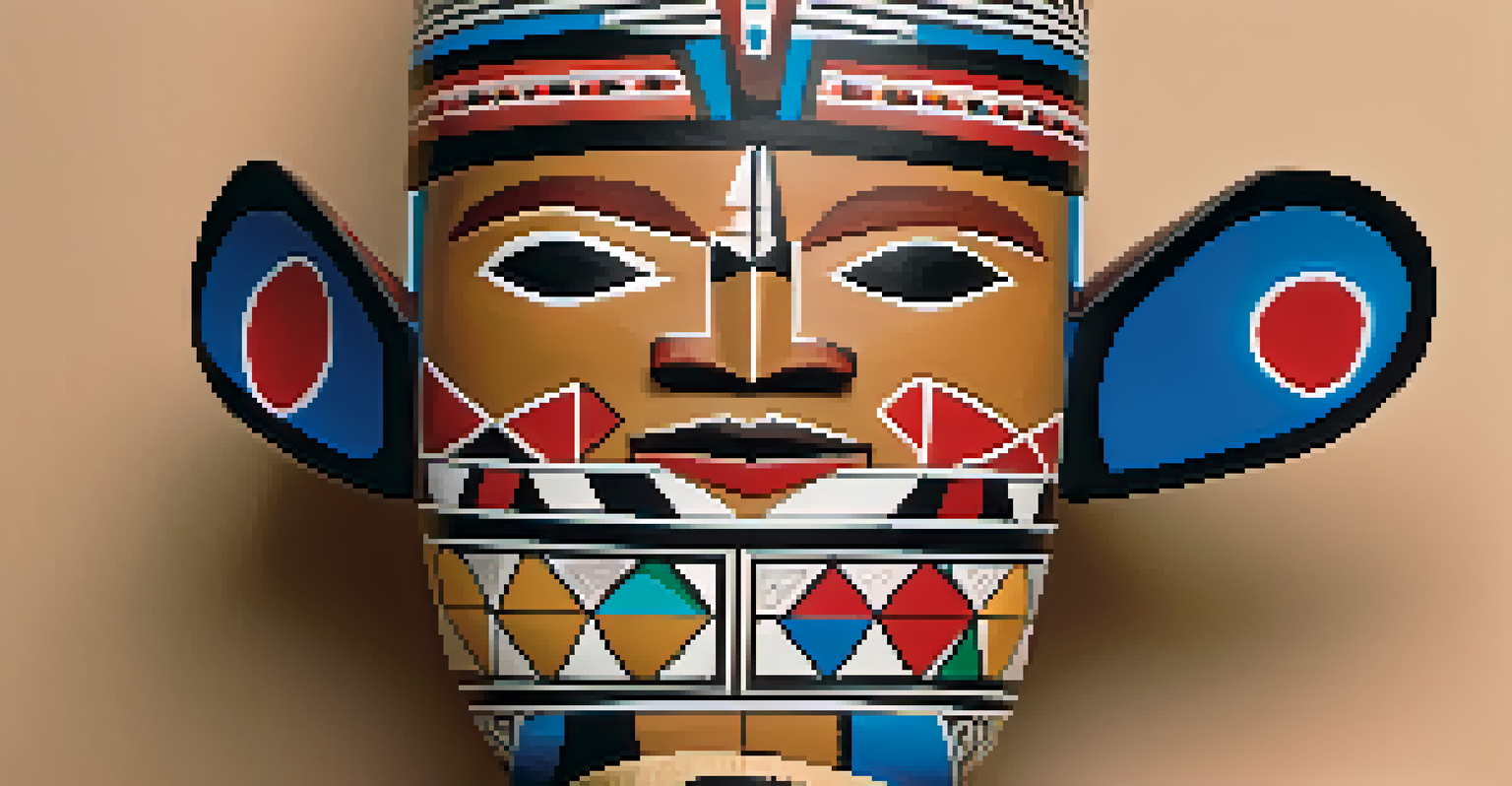The Legacy of the Heard Museum in Phoenix's History

The Founding of the Heard Museum: A Cultural Beacon
The Heard Museum was founded in 1929 by Dwight and Maie Heard, who were passionate about Native American art and culture. Their vision was to create a space that showcased the rich heritage of Indigenous peoples in the American Southwest. This endeavor not only preserved artifacts but also celebrated living cultures, making it a pioneering institution in cultural representation.
Art is a reflection of our culture, and the Heard Museum showcases the rich tapestry of Native American life.
Initially, the museum began as a small collection of Native American artifacts in the Heard's private home. Over the years, it transformed into a major cultural institution, expanding its exhibitions and programs to include a wide range of Native American art. This evolution reflected the growing appreciation for Indigenous cultures and their contributions to American history.
Today, the Heard Museum stands as a testament to the Heards' commitment to cultural preservation. It continues to engage visitors with its extensive collections and educational programs, fostering a deeper understanding of Native American histories and traditions.
Art and Artifacts: A Window into Native Cultures
The museum is renowned for its impressive collection of Native American art, featuring everything from traditional pottery to contemporary pieces. This diverse array of artifacts provides visitors with a unique glimpse into the artistic expressions and cultural practices of various tribes. Each piece tells a story, reflecting the rich tapestry of Native American life.

One of the museum's highlights is its collection of Hopi Katsina dolls, which are intricately carved and painted to represent spiritual beings. These dolls not only serve as art but also as educational tools, offering insight into Hopi beliefs and traditions. The careful craftsmanship of these pieces showcases the skill and dedication of Native artisans.
Cultural Heritage Preservation
The Heard Museum is dedicated to showcasing and preserving Native American art and culture, fostering a deeper understanding of Indigenous histories.
In addition to permanent collections, the Heard Museum frequently hosts temporary exhibits that feature contemporary Native artists. This commitment to showcasing current work helps bridge the gap between traditional and modern practices, allowing visitors to appreciate the evolving nature of Native art.
Educational Programs: Bridging Past and Present
Education is at the heart of the Heard Museum’s mission, with programs designed to engage audiences of all ages. From school tours to workshops, the museum offers a variety of opportunities for learning about Native cultures. These initiatives aim not only to educate but also to foster respect and appreciation for Indigenous histories.
Cultural preservation is not just about saving artifacts; it's about honoring the stories and traditions they represent.
One notable program is the museum's partnership with local schools, which brings students into the museum for interactive learning experiences. These visits often include hands-on activities, allowing students to create art inspired by Native traditions. Such engagement helps to instill a sense of pride and understanding in young learners.
Additionally, the Heard Museum hosts lectures and symposiums featuring Native speakers and artists, providing a platform for dialogue and exchange. These events encourage community involvement and help to amplify Indigenous voices, ensuring that their stories are heard and celebrated.
Cultural Events: Celebrating Native Heritage
The Heard Museum is famous for its vibrant cultural events that celebrate Native American heritage throughout the year. One of the most anticipated events is the annual Heard Museum Guild Indian Fair and Market, which draws thousands of visitors eager to experience Native art, dance, and music. This event not only showcases artists but also fosters cultural exchange and appreciation.
During these festivities, attendees can enjoy live performances, traditional storytelling, and interactive demonstrations. These experiences immerse visitors in Native cultures, providing a deeper understanding of their traditions and contemporary expressions. The festival atmosphere creates a sense of community among participants and attendees alike.
Engaging Educational Programs
The museum offers interactive educational programs that connect visitors of all ages with Native traditions and contemporary issues.
By hosting such events, the Heard Museum plays a vital role in promoting the importance of cultural preservation. It encourages the public to engage with Native traditions, ensuring that these rich legacies are celebrated and passed down through generations.
The Museum's Role in Advocacy and Awareness
Beyond its exhibitions and programs, the Heard Museum also plays a significant role in advocacy for Native rights and issues. The museum actively engages in discussions about contemporary challenges faced by Indigenous communities, such as land rights and cultural preservation. This commitment to advocacy helps raise awareness and promote social justice.
Through collaborative efforts with Native leaders and organizations, the museum seeks to create a platform for Indigenous voices. This not only empowers Native communities but also educates the broader public about their struggles and triumphs. By addressing these critical issues, the Heard Museum positions itself as a leader in the ongoing dialogue about Indigenous rights.
The museum also participates in various initiatives aimed at promoting diversity and inclusion within the arts. By showcasing a wide range of Native perspectives, the Heard Museum fosters a deeper understanding of cultural complexities, encouraging visitors to appreciate the richness of Indigenous histories.
Preserving the Past: The Museum's Collection Management
The preservation of artifacts is a crucial aspect of the Heard Museum's mission. The museum employs skilled conservators who work tirelessly to ensure that pieces remain intact for future generations. This involves meticulous care, from climate control to specialized cleaning techniques, all designed to protect the integrity of the collection.
Moreover, the museum is committed to ethical stewardship, often collaborating with Native communities to ensure that artifacts are cared for in a culturally sensitive manner. This partnership respects the spiritual significance of many items, acknowledging their importance beyond mere aesthetics. Such practices highlight the museum's dedication to honoring Indigenous cultures.
Advocacy for Indigenous Rights
Beyond exhibitions, the Heard Museum actively advocates for Native rights and educates the public about the challenges faced by Indigenous communities.
As new technologies emerge, the Heard Museum embraces innovative methods for preservation and documentation. This forward-thinking approach not only enhances the care of existing collections but also allows for the introduction of new works, ensuring that the museum remains a dynamic space for cultural exchange.
The Future of the Heard Museum: Innovation and Growth
Looking forward, the Heard Museum is focused on innovation and growth to continue its mission of cultural preservation and education. Plans for the future include expanding digital access to collections, allowing a wider audience to engage with Native art and history online. This move toward digital inclusion reflects the museum's commitment to accessibility.
Additionally, the museum aims to enhance its community programming, ensuring that it remains relevant to contemporary issues faced by Indigenous peoples. By adapting its offerings to meet the needs of the community, the Heard Museum seeks to foster a sense of belonging and connection among visitors. These initiatives demonstrate a proactive approach to cultural engagement.

Ultimately, the Heard Museum's legacy is one of resilience and adaptation. As it navigates the future, it remains dedicated to honoring the past while embracing new opportunities for collaboration and dialogue. This commitment ensures that the museum will continue to be a vital part of Phoenix's cultural landscape for years to come.